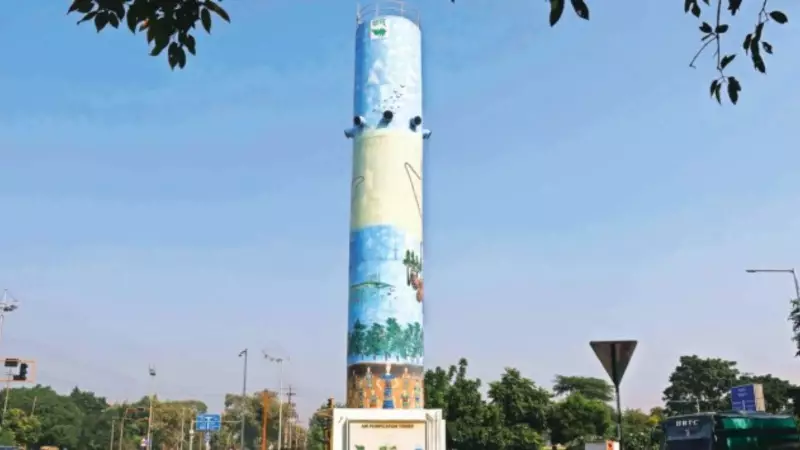
Chandigarh's Giant Air Purifier Deemed a Failure, Set for Dismantling
The Chandigarh Administration has taken decisive action against what was once hailed as India's tallest air purifier, cutting its power supply and directing the responsible firm to dismantle the structure immediately. This move comes after multiple studies concluded the massive installation at Transport Chowk was completely ineffective at improving air quality, despite earlier ambitious claims.
The Final Notice and Power Disconnection
Officials from the Chandigarh Pollution Control Committee (CPCC) confirmed they have disconnected the electricity to the 24-meter-tall tower and issued firm instructions for its removal. This action follows the expiration of a three-month deadline given to the company, Pious Air Private Limited, which ended in October.
"We have disconnected the power supply and directed the firm to remove the structure with immediate effect," stated CPCC Member Secretary Saurabh Kumar. "Two studies were conducted, and it was found that the air purifier was not delivering the results as claimed. So, it's of no use, and thus, we took the decision."
Third-Party Assessment Reveals Limited Impact
Before terminating the contract, the Chandigarh Administration commissioned a thorough third-party assessment through the National Institute of Technical Teachers Training and Research (NITTTR). The findings were unequivocal: the air purifier covered only a very limited area, making it ineffective for the location it was designed to serve.
Following this assessment, the CPCC governing body decided in July to terminate the five-year contract with Pious Air Private Limited, which had installed the tower in 2021 and was responsible for its operation and maintenance until 2026.
Financial Costs and Failed Promises
The project represented a significant investment with disappointing returns. While the firm bore the construction cost of the tower, the UT Administration was responsible for supplying electricity and paying the substantial power bills.
An official revealed that the administration was paying approximately Rs 25,000 monthly, totaling around Rs 3 lakh annually, to operate the device that ultimately proved useless.
The company had made impressive claims before installation, asserting that the tower would:
- Clean air within a 500-meter radius
- Reduce ambient temperature by several degrees
- Cut pollutants including PM2.5, PM10, nitrogen oxides, and sulfur dioxide by up to 50%
However, reality fell far short of these promises. "Transport Chowk was chosen for the pilot project as it witnesses heavy vehicular traffic, and thus, heavy vehicular emissions, but it never purified the air as claimed by the firm," a UT official confirmed.
Broader Implications for Pollution Control Projects
The failure of this high-profile pilot project represents a significant setback for the Chandigarh administration's air quality improvement plans. The administration had initially intended to install similar air purifier towers at six major intersections throughout the city, but the poor performance of this first installation has likely shelved those expansion plans.
The company's request for additional time and allowances from the UT Administration was ultimately rejected in light of the conclusive evidence against the technology's effectiveness. The dismantling process is now expected to proceed without further delay, marking the end of an ambitious but unsuccessful experiment in urban air purification.





